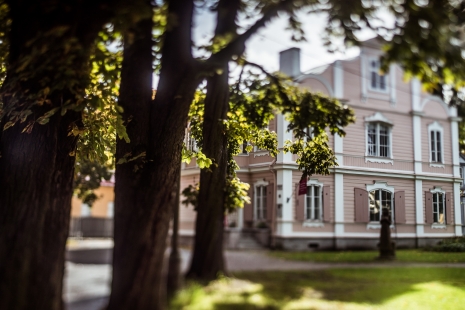The work of Anu Muiste, with her unique style of painting, is characterized by a deep social cognition. Her paintings would be like philosophical explosions, where the real message is mixed with a surreal form while painted gracefully and sensitively. A. Muiste has participated in the group exhibitions of the Estonian Painters’ Association in Estonia and Finland.
Comment from the artist:
Recently, I was reminded of a strange sentence from my childhood: “Don’t be so sensitive.” I remember that sentence being said often and to many. Sensitivity meant weakness. Nobody wants to be weak. It is especially the boys who don’t want to be weak, and besides, at that time, a sensitive person was an extremely strange thing. I also wanted to be a strong and good girl, but it didn’t work out for me.
Carl Jung was the first to examine sensitivity, associating it with introversion. Fortunately, this is no longer the case today. In fact, this would be too easy an explanation for a complex construct. Sensitivity took on a new meaning in the 1990s when Elaine N. Aron, with a flair for popular psychology, was able to empirically prove with a questionnaire she had developed that HSP (Highly Sensitive Person) is a trait of character. People with this trait have sensory-processing sensitivity, which means that they process physical, emotional, and social information deeply. However, looking at the cultural context, one might think that sensitivity versus insensitivity is related to the age of the culture. In Japan, sensitivity is considered a good trait of character, which indicates that a person can consider others. In a more aggressive and younger culture, such as North America, where there is a higher level of competition, sensitivity is considered a weakness, and its traits of character related to it are concealed. It made me think about Estonia-where are we on the sensitivity scale?





